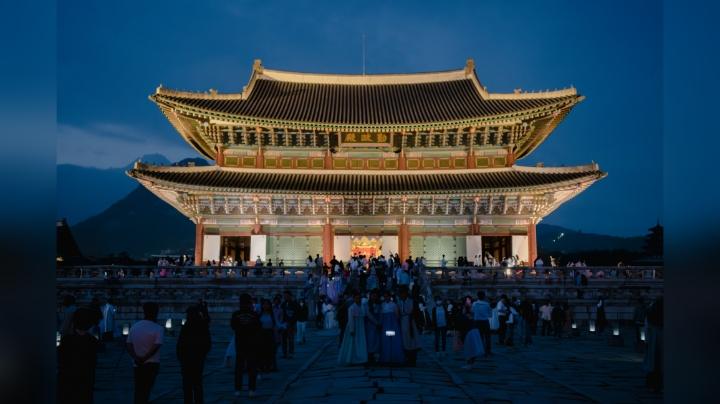
Puncak Bogor, a breathtaking highland retreat nestled in the heart of Indonesia, transforms into a bustling hub during Lebaran. This festive season draws countless travelers eager to escape the city’s heat and enjoy its cool mountain air. With picturesque views and lush landscapes, Puncak Bogor offers an idyllic getaway for families and friends alike.
However, with so many visitors flocking to this popular destination, traffic congestion can quickly become a challenge. To tackle this issue head-on for 2025’s celebrations, authorities have introduced an innovative one way engineering plan that promises to streamline travel in the region. Let’s dive deeper into what this means for your journey through Puncak Bogor during Lebaran!
The One Way Engineering Plan
The One Way Engineering Plan is a strategic initiative aimed at improving traffic flow in Puncak Bogor during the peak travel season of Lebaran. This plan is designed to streamline vehicle movement, making it easier for travelers heading up to this popular getaway. By designating specific directions for vehicles, congestion can be significantly reduced. The plan usually implements one-way routes that allow cars to move more freely, minimizing bottlenecks that often occur during holiday weekends.
Traffic management teams will monitor and adjust the system as necessary. They aim to enhance safety while ensuring everyone reaches their destination smoothly. This approach also encourages better compliance with road rules among drivers, fostering a more orderly transportation environment throughout Puncak Bogor during the festivities. With careful planning and execution, this engineering solution promises a positive experience for all who venture into this beautiful region of Indonesia during Lebaran 2025.
Benefits of the One Way System
The One Way System in Puncak Bogor offers a streamlined travel experience. By directing traffic in one direction, congestion is significantly reduced. This design helps to maintain smoother flows during the busy Lebaran season. Safety is another major benefit. With vehicles moving in a single direction, the risk of accidents decreases. Travelers can feel more secure while navigating through this popular destination.
Moreover, this system enhances air quality by minimizing idle time spent in traffic jams. Emissions are lowered as cars spend less time on the road. Additionally, local businesses can thrive with improved access for visitors. Easier navigation encourages tourists to explore shops and restaurants along their route. This approach fosters a more enjoyable atmosphere for everyone residents and visitors alike will appreciate the enhanced environment that comes from organized traffic flow.
Potential Challenges and Solutions
Traveling through Puncak Bogor during Lebaran is a festive experience, but the one-way engineering plan may bring its share of challenges. One major concern is congestion, especially with an influx of travelers eager to reach their destinations. To combat this, local authorities can implement additional traffic monitoring systems. Real-time updates via apps or social media can keep everyone informed about road conditions.
Another challenge could be driver confusion regarding the new system. Clear signage and ample information at key points along the route will help guide drivers smoothly through the changes. Unexpected weather conditions can pose risks on hilly roads. Ensuring that emergency services are well-prepared for any situation will provide peace of mind for all travelers navigating Puncak during this bustling season. With these proactive measures in place, everyone can enjoy a smoother journey amid the holiday festivities.
Tips for Navigating the One Way System During Lebaran
Navigating the one way system in Puncak Bogor during Lebaran can feel daunting. Start your journey early to beat the traffic rush. Morning hours are typically quieter, allowing for a smoother drive. Use navigation apps to stay updated on real-time traffic conditions. These tools can help you find alternative routes if congestion builds up unexpectedly.
Pack snacks and water for the trip. With heavy traffic expected, being prepared makes the experience more enjoyable. Stay patient and remain calm while driving. The festive season brings out many travelers, so expect delays and plan accordingly. Consider carpooling with family or friends. This not only reduces the number of vehicles on the road but also adds to your festive spirit as you share stories along the way. Familiarize yourself with local landmarks ahead of time. Knowing key points will make your journey less stressful and more enjoyable amidst all the hustle and bustle.
Alternative Routes for Travelers
For those looking to avoid the main routes into Puncak Bogor during Lebaran, several alternative paths can make your journey smoother. One option is taking the Jagorawi Toll Road, which connects directly to major highways leading towards Bogor. Travelers can also explore lesser-known roads like the Ciawi route. This scenic drive offers beautiful views while steering clear of heavy traffic. Just be mindful of local conditions and road quality; some areas may require a careful approach.
Another great choice is using GPS navigation apps that provide real-time updates on traffic patterns. These tools often suggest backroads or less-congested routes based on current data. Consider stopping at small rest areas along these alternatives for refreshments or breaks—perfect for stretching legs after long hours on the road.
Conclusion
Puncak Bogor is a favored destination for many during Lebaran. The beautiful scenery and cooler climate attract visitors from all over Indonesia. However, the influx of travelers can lead to significant traffic congestion, especially as families head out to celebrate. The implementation of the One Way Engineering Plan aims to ease this burden. By allowing only one direction of traffic at certain times, it helps streamline the flow on busy routes in Puncak Bogor during peak travel days.
This system offers several benefits, including reduced travel time and improved safety conditions for both drivers and pedestrians. As vehicles move efficiently in one direction, there’s less chance of accidents and bottlenecks. However, challenges may still arise with this new setup. Some travelers might find themselves confused about detours or frustrated by temporary road closures. Planning ahead can mitigate these issues; being aware of alternate routes and real-time updates will enhance everyone’s experience.






